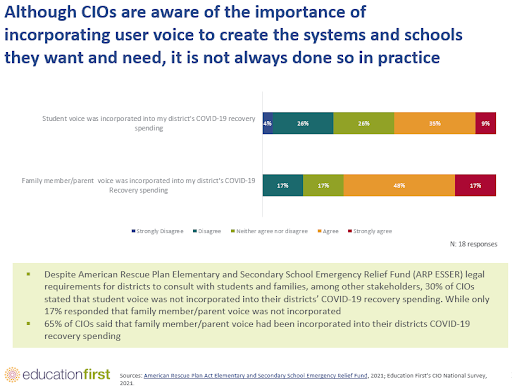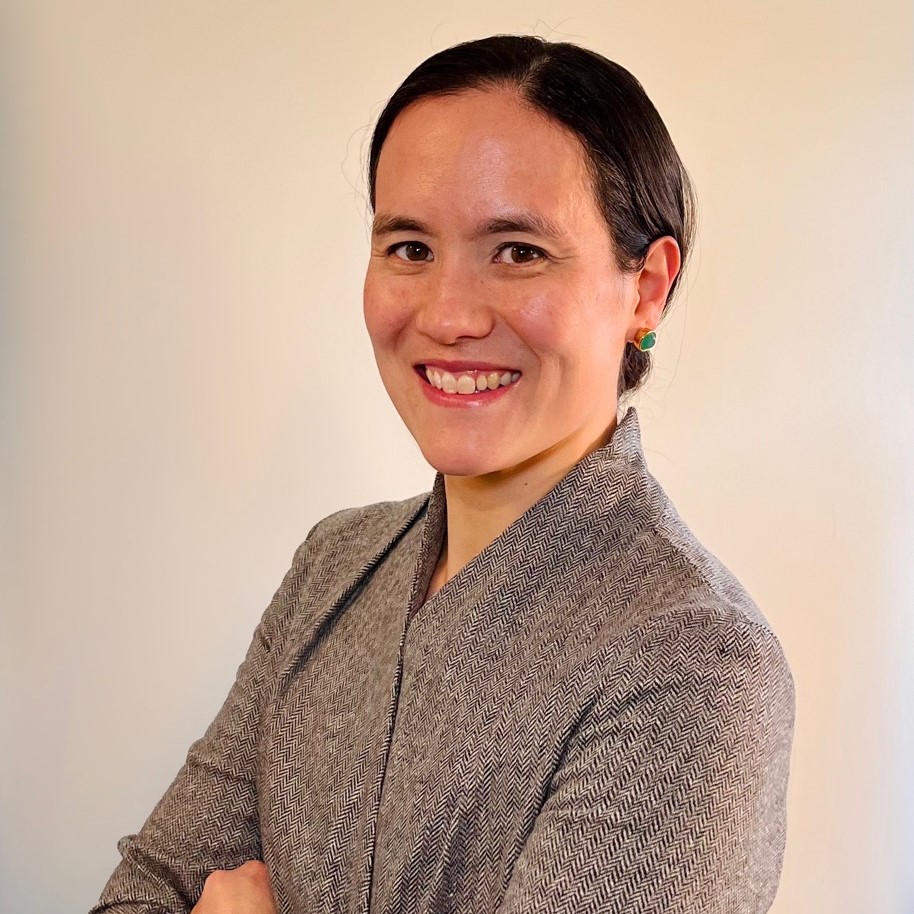There have been a lot of articles on the current state of education, what districts are doing in response to COVID-19, and ideas about what should happen post-pandemic in public education. Many of these articles share a call for re-envisioning the work of districts beyond direct responses to the current COVID-19 challenge. In the fall of 2021, we began gathering insights from national experts, district leaders, and parents and parent advocates to understand not just why there is a need to re-envision the work of public school districts, but also how to do so with equity at the center. What we heard is motivating and encourages us to imagine better educational outcomes for students on the other side of this challenging time.
As we deepened our understanding of the current state of districts and education, we looked at where the highest needs are, the role of innovation in districts, and barriers and enabling conditions for district innovation. There are some immediate needs that were identified in our interviews—a growing teacher shortage, remediation and learning acceleration to address unfinished learning, and continued focus on student health, safety and overall well-being. However one primary, longer term need rose to the top: the need for equity to be centered in COVID-19 recovery efforts. We consistently heard about the need for the space and tools to help district leaders—and their broader teams and community partners—to strategically plan and collaborate to embed equity into their planning and practices. What could the strategic re-envisioning of districts look like when equity is foundational?
Re-envisioning district work with equity at the center looks like deeply engaging students and families as problem solvers as districts move toward a post-COVID-19 world. We must equip people within our district systems to work with families, students and teachers to co-create new ideas and solutions. Ultimately, this means building the systems students need rather than just tweaking the existing systems and school structures. The first step is translating district leaders’ desires to elevate family voice into practices that tangibly create space in their work to gain real insight, ideas and direction from families and students. We asked Chief Innovation Officers (CIOs) across the country for insights into what these practices currently look like in districts given this role is uniquely often charged with designing new equity-focused solutions with families and students. This research surfaced that not all districts—even amongst those already with innovation priorities—included students and families in their COVID-19 response decisions (see figure below). Other research shows that a majority of parents still do not know how their districts are spending ESSER funding.¹ Currently, CIOs surveyed describe family empowerment in their districts as a mix of surveys, task forces, feedback sessions and advisory councils, all of which can inform district decisions and design but often lack clear processes to translate ideas into action. This is not enough to get past user-informed decisions to truly co-creating solutions that center student and family voice. The goal, explained by one family and student advocate is “a team of teachers, school leaders, parents and students who are really fully activated around innovation” and a district champion (in the best case, a dedicated CIO role) who works with them.

Equity centered district work looks like building systems that are proactive and resilient, intentionally preparing for future disruptions as well as anticipating new opportunities and needs. In addition to elevating family and student voice, district innovation leaders must know how to transform systems to make them more flexible, proactive and resilient. As one CIO reflected, “District systems aren’t built for innovation. Standardization and systemization makes sense for districts and efficiency, but it makes innovation hard.” Centering family voice requires that education systems take a more dynamic approach to their work and seek a crucial outside-the-system viewpoint to challenge and evolve their work. It also requires that districts create the space for that strategic thinking and agility to design solutions that do not fit the current standardized models for schooling. As one CIO shared, “We have so many people thinking about today and the current issues and nobody is thinking about the future work and thinking about ‘Where do we want to go?’” To create space districts need to build their ambidexterity² so that they can think strategically even in the midst of crises and urgent needs. There are multiple structural, procedural, and other tactical shifts that districts can make to ensure solutions are created that look more than 3–12 months into the future. These options may include shifts in organizational design to separate out team members solely looking to the future, or structuring leadership team meetings differently to ensure that both tactical, short-term decisions and strategic, longer-term discussions can take place.
Equity centered district work looks new, marrying what works from decades of researching how students learn with new ideas to support a diverse array of learners. There are elements of instruction that have a strong evidence base, like the science of reading, that must be a foundational piece of any new idea. However, the list of what we know works for all learners is short and we should avoid the temptation to return to a version of “normal” with the pre-COVID practices that produced inequitable outcomes in our public education since its inception. There has been work on equity for years but, as one national expert put it, “Less of the work is grounded in equity than one might think. A lot of it is within this competitive echo chamber of large districts trying to beat each other at who is doing the newest, best thing for kids. There are lots of tweaks, but very little out of the box thinking to really rethink the foundation of school systems and creating something that enables equity.” Innovating for equity ensures that the new policies, programs and school models that arise from strategically looking ahead and designing new solutions and opportunities center student and family needs and interests.
Regardless of the challenges, the work of transforming systems is especially crucial as we come out of the COVID-driven upheaval. It is the time to support district innovation leaders, elevate and center student and family voice, and shift from focusing solely on day-to-day fires to longer-term planning for innovative systemic change that increases equity in our public school districts. Why now? As one CIO put it, “COVID really laid bare the things that weren’t working before. It gives an opportunity and urgency to really push on some of the basic ways that districts have been failing students and particularly failing to create equitable opportunities.” We are at a crucible moment in public education, with an opportunity to put pressure on, and provide support for, the paradigm shifts necessary to address issues of equality and the changing world our students will lead in.


